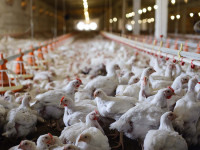Money
Entrepreneurs say tourism’s recovery may get hampered by the mandatory guide rule
Footfall in the Annapurna Circuit has been on the rise this year, providing relief to businesses hit hard by the pandemic.
Aash Gurung & Ghanashyam Khadka
Tourists' arrivals in the Annapurna trekking circuit have increased this year, but local entrepreneurs are concerned the compulsory guide provision for foreign trekkers might prove to be counterproductive at a time when the sector is still recovering from the Covid pandemic.
The tourist arrivals in the area during the first three months this year stood at nearly 200, 500 and 2,750, respectively.
Last year, the area had seen only around 40 tourists in January, 170 in February and 1,230 in March.
“Around 150 visitors, on average, enter the circuit trek daily,” said Chhetra Bahadur Gurung, an official at the Annapurna Conservation Area Project’s office in Manang.
Though the number of tourists is still far less than the pre-pandemic levels, they have provided some relief to hoteliers and farmers along the trekking route, officials said.
According to the project office, the circuit trek had seen nearly 26,650 visitors in 2019. But the numbers plunged to around 2,000 in 2020 and 2,400 in 2021 because of the Covid-19 pandemic.
The total number of visitors in the Circuit last year was around 15,900.
“The increase in arrivals has provided a much needed reassurance to more than 100 hotel entrepreneurs in Manang and Lamjung districts to continue their business,” said Kanchha Ghale, chairman of Manang Ngisyang Rural Municipality.
Tara Pun, who runs a hotel in Ghorepani in Myagdi district, said the business has finally started picking up pace with the increase in the number of tourists, especially since mid-March.
Ghorepani is a small settlement in the middle of one of the largest rhododendron forests in the world.
Poon Hill, situated at an altitude of 3,210 metres, is a viewpoint in the vicinity, which has gained much popularity in recent years.
The hill, which lies in the Annapurna Circuit, is a coveted destination for tourists who want to observe sunrise in the backdrop of the Dhawalagiri and Annapurna mountain ranges.
Local traders have been elated by the soaring number of domestic tourists, in addition to the foreigners.
“The majority of them come for two to three day trips and the students, too, come here on educational tours,” Pun told the Post.
Annapurna Rural Municipality, the local government under which Ghorepani and Poon Hill fall, collects entry fees from the visitors.
Bal Krishna Rana and Rana Bahadur Pun, two locals, have been contracted to collect the fees and operate a tea and coffee stall at Poon Hill, for Rs5.6 million annually, including Value Added Tax.
The entry fee for foreigners and Nepalis has been set at Rs150 and Rs50, respectively.
The area has been witnessing up to 500 visitors daily from home and abroad these days.
According to the Tourism Police Office in Ghorepani, around 300 foreigners arrive at Ghorepani every day via four trending routes– Tatopani; Birethati- Ulleri; Chhomrong-Ghandruk-Tadhapani and Nagi-Mahare.
The number of visitors has increased since mid-March, but the police do not maintain records of Nepali and Indian travellers, according to Bam Bahadur Thapa, a police constable at the Tourism Police Office.
Originally, the Annapurna Circuit trek began at Besisahar, the headquarters of Lamjung.
The trek from Lamjung to Kaski via the Besisahar-Manang-Thorong La-Muktinath-Birethanti route took 21 days.
But the expansion of road networks to Muktinath and parts of Manang district has shortened the three-week camping trek to one week.
The tourism entrepreneurs in the region, however, are worrisome. They are wondering if the mandatory provision for foreign trekkers to have a guide might disturb the tourists’ flow.
The Tourism Board on April 1 enforced the mandatory guides and trekking permits guidelines for foreign visitors on 44 trekking trails across the country, putting a ban on foreign trekkers from visiting Nepal’s national parks and conservation areas without a guide or a porter for the entire journey, citing safety concerns.
The new rules say that the government-registered trekking company will arrange the guides or the porters. Foreign visitors have to obtain a trekkers' information management systems (TIMS) card before going trekking.
Binod Gurung, chairman of the Tourism Management Committee, Manang, warned the new rule could be counterproductive for Nepal’s tourism recovery.
“The decision is going to discourage trekkers from coming to Nepal,” said Gurung. “They should have categorised the trekking trails instead of a blanket enforcement of the rule.”
Tourism entrepreneurs in the Ghorepani region have also criticised the provision of mandatory guides for foreign travellers.
Due to the provision, individual backpackers have become more hesitant to go on treks, whose direct consequences are borne by the teashops, eateries and lodges on the trekking routes, local traders said.
They argued that the guides would prefer taking tourists to the high-end hotels, directly impacting the business in the smaller ones.
Around 30 hotels and restaurants of different sizes currently operate at Ghorepani.
Biren Pun, chairman of the Ghorepani Community Development Committee, said that the latest government policy has added to the woes of micro-entrepreneurs who are still suffering from the setbacks caused by the pandemic.
“The tourists travel as per the recommendation of their guides,” said Pun. “If the guides and big hotels forge an alliance, the small hotels will not survive.”
Gurung, the chairman of the Tourism Management Committee, Manang, added: “The country might lose its attraction in the international tourism market, if the tourists start seeking alternative destinations because of this rule.”




 9.12°C Kathmandu
9.12°C Kathmandu.jpg)














%20(1).jpg&w=300&height=200)
